Key Takeaways
- In preparation for campus-wide e-text adoption, Daytona State College completed a two-year comparative study of four textbook distribution models: print purchase, print rental, e-text rental, and e-text rental with e-reader device.
- Though faculty and administrators may embrace e-texts, students often prefer to rent printed textbooks.
- Institutions seeking to implement campus-wide e-text adoption should be prepared to address specific concerns, including faculty choice, infrastructure needs, student technological skills, cost savings, and instructional adaptation.
Textbooks too often hinder rather than help students because of their prohibitively expensive prices. Colleges and universities facing intense pressure to lower education expenses while increasing access, retention, and achievement now find addressing the textbook problem more and more urgent. Used textbook sales have grown dramatically over the past 15 years, due in part to the rise of online retailers such as Half.com and Chegg. Brick-and-mortar college bookstore operators like Follett and Barnes & Noble have introduced textbook rental programs. In 2010 a key provision of the Higher Education Opportunity Act of 2008 addressing textbook adoptions took effect, giving used-book retailers and rental programs a boost. As Barbara Romzek, interim vice provost for academic affairs at the University of Kansas, explained, students must now be informed at the time of enrollment what textbooks and other materials will be used in their upcoming courses.1
Many colleges and universities have piloted digital solutions to make textbooks more affordable and accessible, including course- and program-specific adoption of e-texts and e-readers that offer students substantial financial savings and web-enhanced, up-to-date course materials. But rarely have these pilots been tried at open-access, community needs–focused institutions. In 2009, Daytona State College (DSC) set out to become the first such institution to pilot digital textbook solutions2 and then scale best practices to create campus-wide e-text adoption.3 Such a change could lead to the end of the textbook as we know it.4
This article describes DSC’s two-year pilot project, a study that compared the experiences of students and faculty using four different textbook distribution models: print purchase, print rental, e-text rental, and e-text rental with e-reader device. The study has helped guide the college’s plans to “go e-text” and suggests that doing so successfully depends on the following:
- Offering faculty the option to teach with e-texts rather than requiring them to do so
- Ensuring that infrastructure is adequate to meet greatly increased demands
- Remedying the technological skill deficits inherent in an open-access student population
- Guaranteeing students cost savings large enough to compensate for their initial discomfort and frustration with the technology
- Providing resources and support for faculty adapting their instruction to fit new technologies
Project Description
In July 2009, Daytona State College applied for a grant from the U.S. Department of Education Fund for the Improvement of Postsecondary Education (FIPSE) to support a comparative study of different textbook distribution models.
DSC’s institutional and student profiles are quite different from those of most colleges and universities that have completed similar studies. The college, which has an open admissions policy, serves more than 30,000 students online and at six physical campuses in a two-county district (Volusia and Flagler) in east central Florida. Its mission is to provide access to a quality education for students with a wide range of personal, professional, and academic backgrounds. No student is turned away, though many are required to complete developmental courses before moving on to college credit courses.
How might textbook innovations fare among students with such disparate educational goals and levels of attainment? In November 2009 our Project to Evaluate Textbook Rental Models5 received a two-year FIPSE grant for $274,713 to address this important question. We compared the traditional model of students purchasing print textbooks with several alternatives: print rental; co-op print rental, organized by the bachelor of applied science (BAS) program’s student club; e-text rental; and netbook rental (e-text rental with free use of a netbook computer). By studying the impact of these alternative models in several sections of English and economics courses offered at the college’s main campus in Daytona Beach, we intended to gather data measuring the models’ influence on financial and nonfinancial outcomes, including:
- Academic performance
- Retention
- Student and faculty preferences
DSC Students: Diverse and Often on the Margin
At the time we received the FIPSE grant, print textbook rental programs were not new, and some institutions had piloted programs involving widespread adoption of e-texts or requirements that students borrow or buy an electronic device for regular classroom use. But such pilot programs had been implemented almost exclusively at private, research-focused, or endowment-supported universities with residential campuses and traditional-age, mostly full-time undergraduates. For example, institutions participating in a fall 2009 pilot project6 using Amazon’s Kindle e-reader included Princeton University,7 Arizona State University,8 the University of Virginia,9 Case Western University,10 Reed College,11 and Pace University.12
At DSC, no student housing is available because all students are commuters. Many students enroll in courses determined to find a place for their college education among significant preexisting commitments, like working full- or part-time jobs and caring for children and other family members. Students’ academic work is frequently interrupted by a change in job status.
DSC Students’ Job Insecurity
In July 2011, according to the Florida Department of Economic Opportunity the unemployment rate in Palm Coast, the biggest city in Flagler County, stood at 14.7 percent, down from 15.5 percent the previous July but still the highest unemployment rate in Florida.
For these students, vocational and workforce certificate programs are nearly as attractive as a two-year associate of arts transfer degree. Preferences for these programs, combined with DSC students’ other characteristics, allowed us to evaluate textbook rental models’ impact on a student demographic previously unrepresented in studies of this kind.
DSC Students, 2010–2011
- 46 percent full-time
- 54 percent part-time
- 31 percent major wage earners in household
- 4,226 considered low income
- 1,536 earned a certificate the previous year
- 1,941 earned an AA
Getting Started
Getting started with the textbook rental program was not easy. From the beginning it was clear that significant project design changes — to both the courses and e-reader device selected — were needed. Materials for MAC1140 (Pre-Calculus), one of the two courses designated for the study, had been too radically altered by the department’s faculty to use with the publisher’s unmodified text, which the study required. Accordingly, sections of ECO2013 (Principles of Macro Economics) were substituted for MAC1140.
Materials for ENC1102 (Literature and Composition), the other course designated for the study, were likewise unsuitable because no publisher had yet obtained sufficient electronic rights to literary works to create a comprehensive anthology of readings. The project team’s solution was to substitute ENC1101 (College Composition), a general-education course which, like ECO2013, draws a representative cross-section of the college’s diverse student body.
Finally, the electronic device originally designated for study in some course sections was Amazon’s Kindle e-reader. Although other institutions had run or planned pilot programs with this device, it was deemed impractical for use with the specific textbooks and courses included in our study. Several e-readers that have since become popular, like Barnes & Noble’s Nook and Samsung’s Galaxy Tab, were not yet available when our study began in 2009. Consequently, the project team elected to substitute a Dell netbook computer (specifically, the Inspiron Mini) for the Kindle, which would both allow students full access to e-text materials and provide document creation tools through Microsoft Office 2007.
Table 1 summarizes the changes to the project forced by these conditions.
Table 1. Project Design Changes
| Original Choice | Replacement | Reason |
| MAC1140 (Pre-Calculus) | ECO2013 (Principles of Macro Economics) | Pre-calculus course content was too highly customized. |
| ENC1102 (Literature and Composition) | ENC1101 (College Composition) | No literature anthologies were available as e-texts. |
| Amazon Kindle | Netbook | Course textbooks were not published in Kindle format. |
In addition to making these changes, the team addressed several logistical issues in its early meetings:
- Course sections involved in the study had not been labeled during registration for the spring semester; students enrolled in those sections were advised of their involvement in the study to prevent the purchase of unneeded course materials.
- Department chairs agreed to accommodate late section switches by students unwilling to participate in the study.
- A loaner agreement form was drafted for use in the netbook rental sections to communicate to students their responsibilities and liabilities and ensure a high collection rate of the devices at the end of each term.
Performing the Experiment
Implementation of the study began during the spring 2010 semester, with four sections each of ENC1101 and ECO2013. Over the project’s four semesters, 12 faculty members and more than 1,250 students participated in at least one pilot section. Students in control sections purchased a printed book from their source of choice, while students in the print rental sections got their textbook either from the circulation desk in the campus library or from the BAS Club in the co-op model. In the e-text rental sections, students purchased an access code at the college bookstore and then registered online for access to the e-text. Students in the netbook rental sections registered rented e-texts online and borrowed a Dell netbook from the college’s IT staff. (Before distributing the netbooks, staff gave a short presentation on the device’s specifications and features, including the e-text’s highlighting and annotating tools.)
As the study proceeded, several challenges arose.
Challenge #1: Online Access
DSC’s Daytona Beach campus has a wireless network from which students in e-text rental and netbook rental sections could access course materials during class. When wireless access points in these classrooms became overloaded, technicians worked to boost signal strength to accommodate full classes. Students nevertheless had difficulty accessing their e-texts at times due to technical issues with publishers’ sites.
Got E-Text? Get E-Reader
One frustrated faculty member observed:
“Teaching with the e-text [without an e-reader] makes collaborative exercises in which individual students would need to be looking at different pages in the text very difficult. Students were unable to refresh their memory of the reading in the moments just before class began. Each time we discussed the reading, we had to devote at least a few minutes to simply summarizing it and recalling the salient features.”
Response: Publishers attempted to make access faster and more consistent. In addition, students were encouraged to download a copy of the e-text on their hard drives if the text was available as a PDF. Instructors in e-text rental sections frequently projected the e-text on a screen for all students to view.
Challenge #2: Lack of Basic Computing Skills
Though some students easily navigated e-text interfaces and fully utilized digital tools, others struggled with basic e-text functionality like creating a user account, entering access codes, locating readings, creating bookmarks, using highlighting tools, and writing notes.
Back to Basics?
After teaching with an e-text, one faculty member concluded, “We need to get more students up to speed technology-wise — to spend more time explaining simple tech concepts.” Another noticed a “huge learning curve for some students, especially those older students or students without much [previous] opportunity to use technology.”
Response: Several faculty members decided to take the lead and present their students with a detailed in-class tutorial on how to access the e-text and use its features.
Challenge #3: Responsibility for Technical Instruction
Despite initial presentations from faculty, IT personnel, and publisher representatives (who were invited to visit the e-text rental and netbook rental sections), a few students in each section required ongoing instruction in how to use electronic resources. Faculty struggled to determine when and how this instruction should be provided.
Response: Some faculty members created and distributed a “cheat sheet” to students with simplified log-in instructions and shortcuts for e-text tools and features. Additionally, e-text access instructions were posted on course home pages within the college’s learning management system, and students were sometimes referred to publishers’ technical support services.
Challenge #4: Logistics of Text Distribution and Collection
Coordinating the distribution of purchased print books, rented print books, rented e-texts, and loaned netbook computers proved difficult for project team members, especially early in the study. Students sometimes had problems obtaining the appropriate texts, as well.
My Textbook Is…Where?
Whereas traditionally most students have obtained their books from a single, simple visit to the campus bookstore, students in the study had to interact with the campus library, publisher websites, and the IT department, and many had to do so in a way that accommodated their status as dual enrollment students or financial aid recipients.
Response: Text distribution and collection improved as the study progressed, despite the absence of a major response to the challenge. Faculty made small changes, such as including an announcement about the date of netbook collection on the schedules in their course syllabi. In addition, late netbook returns, which were initially coordinated by IT personnel (available only during business hours), were eventually coordinated by campus safety officers (available 24 hours) to better accommodate students’ schedules.
Challenge #5: Adapting Instruction
Faculty considered whether and to what degree different textbook distribution models should drive their instructional practices. Faculty teaching print rental sections found that they adapted their teaching plans and methods very little. Aside from asking students not to write or highlight in their books (many students, fearing a low buy-back price, already refrained), nothing much changed.
Response: Faculty teaching e-text rental and netbook rental sections confronted a range of questions relating to when and how they might adapt classroom practices to better fit the technologies available to students:
- What role should e-texts and e-readers play in the classroom — in lectures, discussions, and collaborative exercises?
- Should these technologies simply be available to students when completing their usual assignments? Or should assignments be redesigned in accordance with the skills these technologies develop and the tools they include?
- How might e-texts and e-readers motivate students to go beyond mere reading?
- How might they help create and strengthen student learning communities?
- Could e-texts and e-readers serve effectively as gateways to other technological tools such as clickers13 and backchannels,14 among others?
Though faculty found it difficult to answer these questions conclusively, their responses helped them better understand that a change in textbook distribution could dramatically affect issues ranging from course design and major learning outcomes to specific assignments and classroom exercises.
Evaluation Methods
To meet both FIPSE requirements and local needs, we used multiple data sources to evaluate the models’ impact on participating students and faculty:
- Online surveys focused on usability, affordability, model-specific preferences, and aptitude for learning.
- Focus groups solicited candid feedback from students on the advantages, disadvantages, and implications of each model.
- Stakeholder interviews conducted via telephone with project team members yielded insights into the administrative and technological challenges accompanying each model and helped identify potential barriers to implementation.
All evaluative instruments were approved by the college’s institutional review board (IRB). Participation was strictly voluntary, and no identifying information was collected from respondents. Students electing to participate in a focus group were required to sign a consent form; faculty members who agreed to engage in a stakeholder interview were asked to give verbal consent.
What We Learned: Student Perspectives on Textbooks
Of 327 students who completed our online survey:
- 83 percent reported usually purchasing the required textbooks for their classes.
- 29 percent admitted to not purchasing a required textbook at least once because of its cost.
- 24 percent blamed textbook expenses for taking fewer credit hours than desired during one or more semesters.
- 15 percent identified textbook expenses as an influence on choice of major.
- 59 percent confirmed that the typical college textbook (new or used) costs upward of $74.
No matter the textbook distribution model under consideration, students overwhelmingly supported choice. They worried that a particular model would be forced on them — either through class or activity fees — and they disliked the idea of the college adopting a one-size-fits-all approach to textbook acquisition.
What We Learned: Students’ Technological Anxieties
One limitation of this project was the risk of student self-selection into or out of the rental models. Specifically, students unfamiliar or uncomfortable with the use of technology might have chosen to opt out of an e-text or netbook section in favor of one with a traditional textbook format. In an effort to capture this data, students who withdrew from a project-related section during the first two weeks of the term were asked to choose the statement(s) best describing their concerns. Results varied, but insufficient technical skills and lack of an available printed book emerged as the leading causes for withdrawal, as survey data for ECO2013 in Table 2 indicate.
Table 2. Reasons for Withdrawing from ECO2013
| Reason Given | Fall 2010 | Spring 2011 |
| I did not want to take a course in which a hard copy of the required textbook was unavailable. | 4 | 5 |
| I found it inconvenient to access my textbook from a computer. | 2 | 3 |
| I did not feel that I had the technical ability to read or reference my textbook from a computer. | 1 | 9 |
| I had visual difficulties reading my textbook from a computer screen. | 2 | 3 |
| I disliked being unable to mark-up or highlight portions of the textbook. | 1 | 0 |
| I disliked being unable to reference my textbook during class. | 1 | 1 |
What We Learned: Retention, Grades, and Course Completion
In addition, we gathered data on retention and grades, although it was simply a snapshot of students’ academic performance in a particular section of ENC1101 or ECO2013. Further, these students were enrolled in just one course offering an alternative to the traditional textbook, so we could not confidently determine how retention and grades would be affected if one of the rental models were adopted college-wide. Given the limitations of the available data, we have thus far only drawn anecdotal conclusions about the project’s influence on nonfinancial student outcomes.
Preliminary data reveal that print rental sections of ENC1101 (see Table 3) and e-text rental sections of ECO2013 (see Table 4)produced the highest course completion rates, but inferences drawn from the data would be better supported by looking longitudinally at the overall course completion rate of students involved in the study.
Table 3. ENC1101 Completion Rate* by Textbook Distribution Model
|
ENC1101 Textbook Model |
Fall 2010 |
Spring 2011 |
||
|
Student Count |
Percent of Total |
Student Count |
Percent of Total |
|
| Print Rental | 36 | 77% | 24 | 57% |
| E-text | 32 | 65% | 20 | 53% |
| Netbook | 28 | 60% | 22 | 51% |
| Traditional | 34 | 67% | 19 | 46% |
Table 4. ECO2013 Completion Rate* by Textbook Distribution Model
|
ECO2013 Textbook Model |
Fall 2010 |
Spring 2011 |
||
|
Student Count |
Percent of Total |
Student Count |
Percent of Total |
|
| Print Rental | 56 | 81% | 66 | 83% |
| E-text | 51 | 89% | 64 | 82% |
| Netbook | 27 | 75% | 54 | 73% |
| Traditional | 51 | 89% | 45 | 75% |
What We Learned: Individual Models
Participants in the print rental model appreciated the simplicity with which the library rented and collected textbooks. They were pleased to secure a textbook for $30 or less, as the rental fee was lowered to $15 midway through the study to retain student participants who wanted to take advantage of the on-campus bookstore’s new rental program. Figure 1 shows student perceptions of this model.
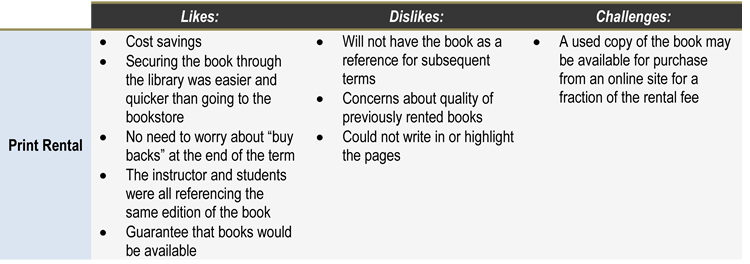
Figure 1. Student Perceptions of the Print Rental Model
In addition, the print rental model seemed to have universal appeal among participating faculty, who liked the fact that nearly every student had a textbook in hand. One instructor commented, “It was great that my students picked up the book on the first day of class. So often they defer purchasing the book for a variety of reasons, and this hinders the lesson plans I have devised.”
Students participating in the BAS Club co-op print rental model, who paid $25 per textbook, suggested that they saved in excess of $75 for each book rented. Regarding retention and completion, study participants said:
“I will be graduating one semester early, and it’s partly because of the books being less expensive and allowing me to take one more class each semester.” (Student)
“I feel that I can take more classes when I don’t have to spend half the cost of a class for a book.” (Student)
“Students can get through an entire bachelor’s degree program with a total outlay of $350 or less for renting books, while buying books would likely cost $2,000 or more.” (Faculty)
Figure 2 shows student responses to a BAS Club survey about the relationship between textbook cost and degree completion.
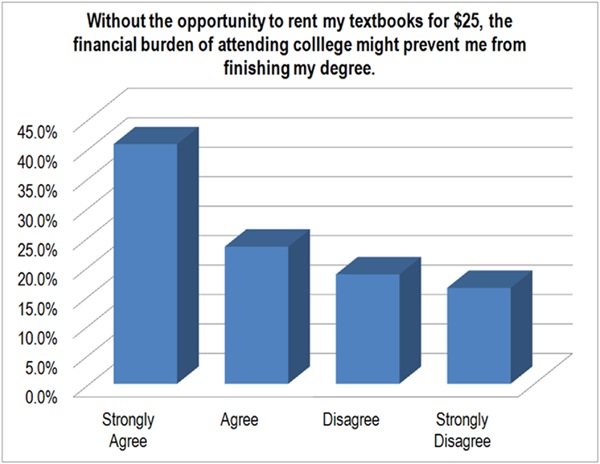
Figure 2. BAS Club Student Survey Question: Degree Completion (n = 88)
Student reactions to the e-text rental model, shown in Figure 3, were almost certainly affected by the (unexpected) fact that a sizable cost savings was not realized across the board.
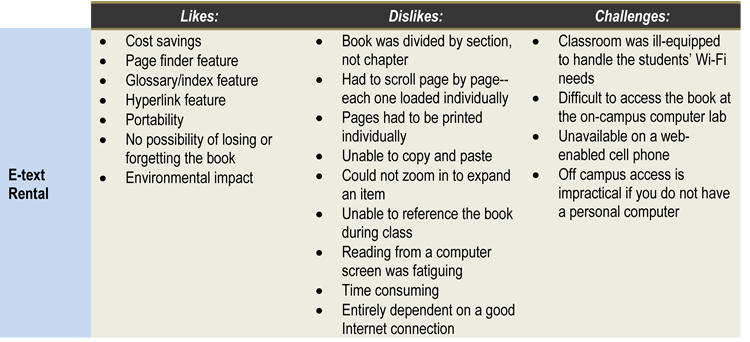
Figure 3. Student Perceptions of E-Text Rental Model
Figures 4 and 5 show the cost of the text by rental model compared to the traditional textbook purchase model for the two courses in the study. During three of the project’s four semesters, students enrolled in some of the e-text pilot sections paid only $1 less for rental of their e-texts than students who bought a printed book due to publisher pricing decisions. These students were also unable to recoup a portion of expenses by selling the textbooks back to the on-campus bookstore when the course ended, which increased their disappointment.

Figure 4. Cost of Text by Rental Model for ENC1101 Compared to Traditional Textbook Purchase
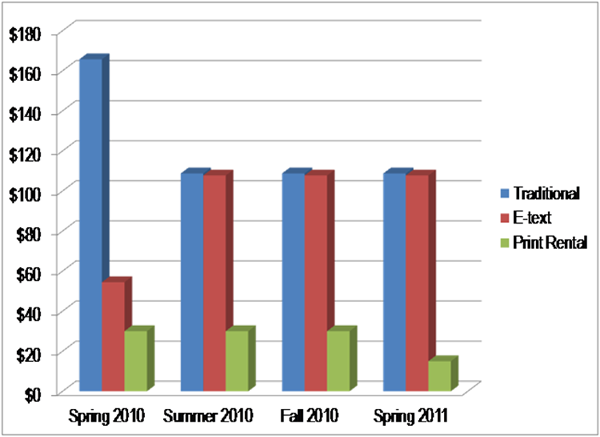
Figure 5. Cost of Text by Rental Model for ECO2013 Compared to Traditional Textbook Purchase
The articulated benefits of the e-text rental model included:
- Cost savings (though variable and sometimes very small)
- Portability
- Keyword search features
- Positive environmental impact
Students indicated they wanted more interactive components in the e-text. Although they complained that reading from a computer screen was fatiguing, they also noted the desirability of having the e-text accessible on a web-enabled cell phone.
Students with limited computer literacy found the e-text more intimidating than their more technologically savvy counterparts. Furthermore, the majority of students simply found the e-text inconvenient and time-consuming compared with a printed textbook. During the focus groups, most participants acknowledged that they had not read as much of the assigned material in electronic form as they would have in hard copy. One student mentioned that she liked “the simplicity of just picking the book up, at any time, anywhere, but not with all the additives.”
E-Texts and Millennials
Although our expectation that older study participants would be least receptive to this model held true, some younger students expressed a similar degree of discontent. They commented on the “hidden costs of the e-text,” which included computer access, web access, and (sometimes) printing, and they noticed the digital divide between “disadvantaged” students whose home environment was not “resource rich” and “advantaged” students with convenient, reliable, around-the-clock web access. Finding the time to study was not enough; students also needed to be in the right location.
While well over half of the students expressed dissatisfaction with the e-text model (see Figures 6 and 7), the majority of participants confirmed that they would be amenable to using an e-text if it meant obtaining their texts for around $35. The one exception was for mathematics courses. Nearly all participants noted that using an e-text for this subject was not an option; they would pay more for a printed text in which they could solve math problems by hand. Students simply could not imagine e-text features and tools that would allow them to work mathematics problems with greater speed, efficiency, and convenience than old-fashioned paper and pencil.15
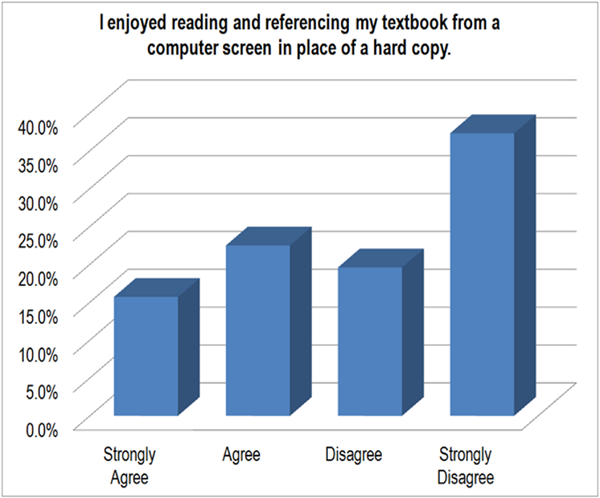
Figure 6. E-Text Student Survey Question: Reading Electronically (n = 104)
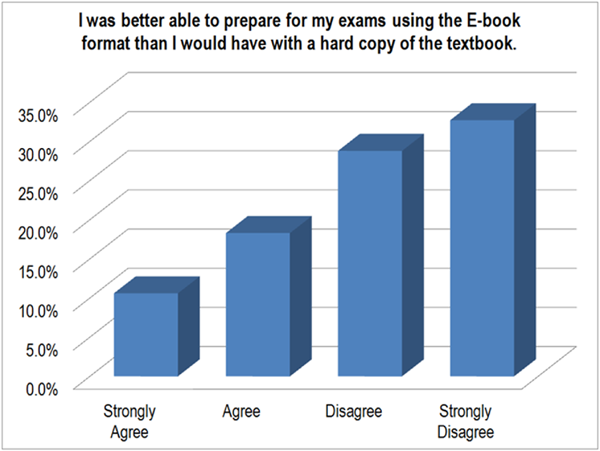
Figure 7. E-Text Student Survey Question: Preparing for Exams (n = 104)
With regard to students’ participation levels, faculty generally felt that the e-texts had a dampening effect. As one instructor remarked, “It was a detriment to learning the material. Many students did not do the required reading; they simply found it inconvenient.” Students’ lack of enthusiasm did not lessen the e-text’s potential benefits, however. “Some students are resistant to technology, but this forces them to experience the digital world,” another instructor suggested. For faculty, e-texts offered new tools for engaging students through digital note-taking, asynchronous messaging, and analytic feedback that, if proven effective, could not be duplicated in a print rental model.
The netbook’s portability, applications, and associated cost savings (only in some instances once the e-text was factored in) were positive features of this model from the students’ perspective, as shown in Figure 8. However, many students preferred using a personal laptop computer instead of the school-issued netbook because it offered a larger screen and full-size keyboard, a more user-friendly mouse, and a longer battery life. When considering a future device for purchase, students mentioned the importance of being able to toggle between landscape and portrait mode.
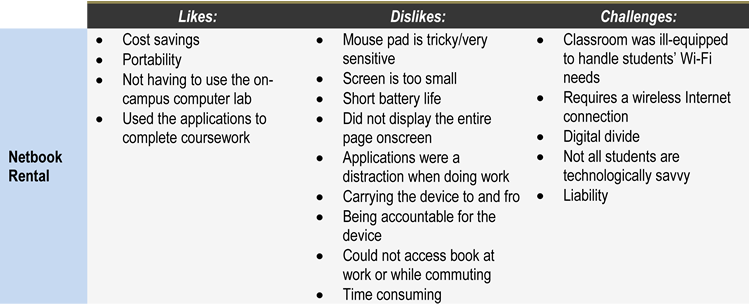
Figure 8. Student Perceptions of Netbook Rental Model
Although challenges of a technical nature frustrated both faculty and students (see Figures 9 and 10), participating instructors noted that “students always had access to a word processor” and “it was a benefit to be able to have students write using the netbooks in class.” One instructor oriented her course design around the available technology, but then devoted a substantial amount of time to troubleshooting during the first weeks of class. Two interviewees mentioned that they were forced to reconfigure course syllabi as a result of spotty wireless access in the classroom. Unreliable connectivity, sometimes traceable to unresponsive publisher websites, was cited as the biggest obstacle to integrating technology with the classroom experience.
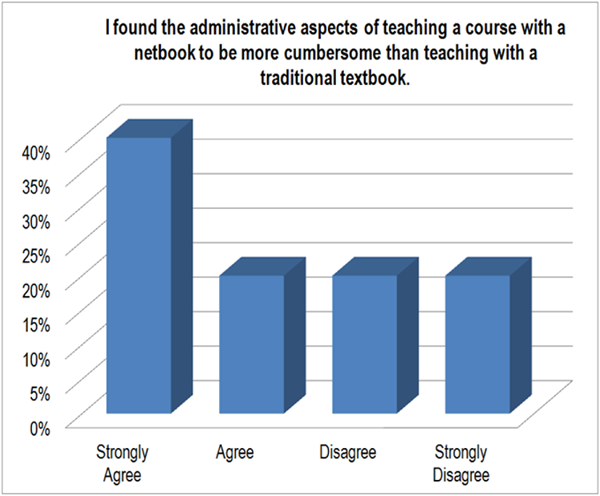
Figure 9. Netbook Faculty Survey Question: Administrative Issues (n = 10)
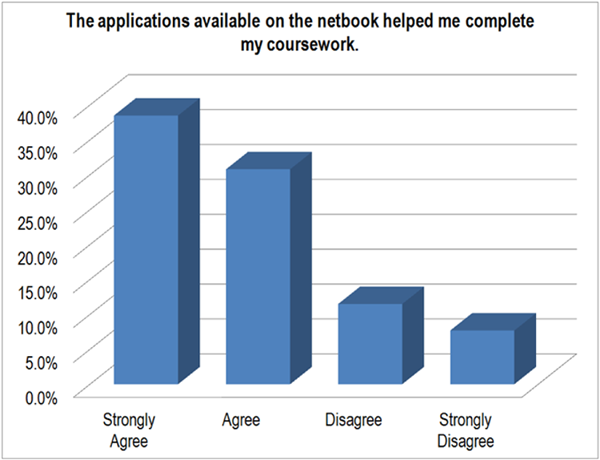
Figure 10. Netbook Student Survey Question: Device Applications (n = 26)
Going E-Text: Key Considerations
Though the results of our study included data on how textbook distribution models affected student retention, grades, and program completion, the snapshot quality of this data has proven less useful to us in determining what we will need to “go e-text” college-wide than the feedback we received through surveys and focus groups. Our analysis of these findings has led us to expect that many students (and some faculty, too) will be reluctant to change, but clear financial incentives as well as strong technical and instructional support will help ensure a successful conversion. The rapid evolution of both e-texts and e-readers will also help smooth the way forward. Indeed, we are struck by the way many of the difficulties our e-text rental and netbook rental sections encountered have already been solved by ongoing product development since our study began in 2009, from the enhancement and diversification of e-texts to the rise of the tablet computer.
At present, DSC is moving forward with campus-wide e-text adoption, following a leadership transition that included welcoming a new president in August 2011. Though we have not set a timeline for going e-text, through our study we have identified a list of key considerations our institution and others like it will need to address:
- Avoid top-down mandates. Institutions that require all instructors to simultaneously go e-text might be courting disaster. An effective approach will encourage, but not require, e-text adoption. Should reluctant faculty members observe demonstrable benefits in the classrooms of colleagues who have switched, they will soon decide to go e-text as well.
- Know your technological limits. Investing in infrastructure increases and upgrades prior to going e-text — not during, and not only as needed — will help create student and faculty buy-in by demonstrating a commitment to the project and preventing technology failures.
- Help students see the advantages. A sizable number of students who otherwise welcome technological expansion in their lives draw the line at textbooks. Clearly communicating to students how much money they will save and what new educational objectives they might meet will lessen resistance to this major change.
- Involve student support services. Faculty are never an institution’s only teachers. Collaborate with IT personnel, writing consultants, learning specialists, supplemental instructors, on-campus tutors, and other support staff in the e-text selection, implementation, and training process to ensure that the assistance students receive campus-wide is both consistent and valuable.
- Provide instructional support and training for faculty. Ultimately, faculty will bear the biggest responsibility for making e-text adoption successful. The development and dissemination of best practices for teaching with e-texts should be fully supported at the college, program, and department levels.
Implementing a new campus-wide solution to the problem of prohibitively expensive textbooks is not without risks. But, as our study has shown, careful planning and piloting can help institutions develop strategies for using e-texts to ensure that this enduring problem troubles students much less in the future.
- Barbara Romzek, interim vice provost for academic affairs at the University of Kansas, in an online memo to the KU community, “New Federal Law Requiring Timely Textbook Information to Students” (February 15, 2010).
- See the Daytona State College Vision statement about e-textbook adoption.
- Steve Kolowich, “The All E-Book Diet,” Inside Higher Ed, September 3, 2010.
- Jeffrey R. Young, “To Save Students Money, College May Force a Switch to E-Textbooks,” Chronicle of Higher Education, October 24, 2010.
- See the Daytona State College statement on textbook grants.
- Douglas MacMillan, “Amazon’s Kindle Is Off to College,” Bloomberg Businessweek, May 4, 2009.
- Cass Cliatt, “Kindle Pilot Results Highlight the Possibilities for Paper Reduction,” News at Princeton, February 22, 2010.
- Arizona State University, “Amazon’s Kindle Heads to ASU Classrooms,” ASU News [now], May 6, 2009.
- University of Virginia, “Darden to Test Amazon’s Kindle DX,” UVa Today, May 6, 2009.
- Case Western Reserve University, “Case Western Reserve University Students to Pilot Latest Addition to Amazon Family of Wireless Reading Devices,” News Center, May 6, 2009.
- Reed College, Computing and Information Services, “Amazon Kindle DX Pilot Project Overview” (2009).
- Pace University, “Kindle Pilot Program at Pace University,” YouTube video (October 30, 2009).
- Scott Jaschik, “Clicker U,” Inside Higher Ed, November 3, 2008.
- Hans Aagard, Kyle Bowen, and Larisa Olesova, “Hotseat: Opening the Backchannel in Large Lectures,” EDUCAUSE Quarterly, Vol. 33, No. 3 (2010).
- John K. Waters, “E-Textbooks: 4 Keys to Going All-Digital,” Campus Technology, August 3, 2011.
Additional Resources
For additional resources, view our E-Text Trunk.ly List and our E-Text Articles and Resources web page.
© 2011 Benjamin Graydon, Blake Urbach-Buholz, and Cheryl Kohen. The text of this article is licensed under the Creative Commons Attribution-Noncommercial-No Derivative Works 3.0 license.
